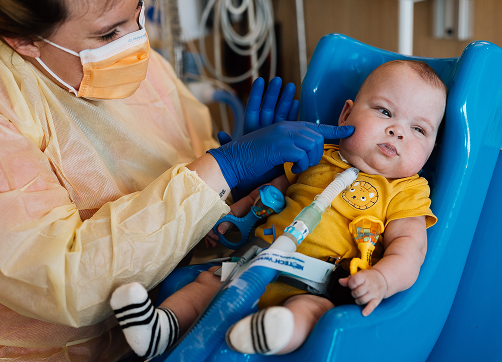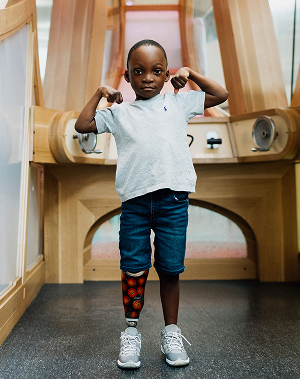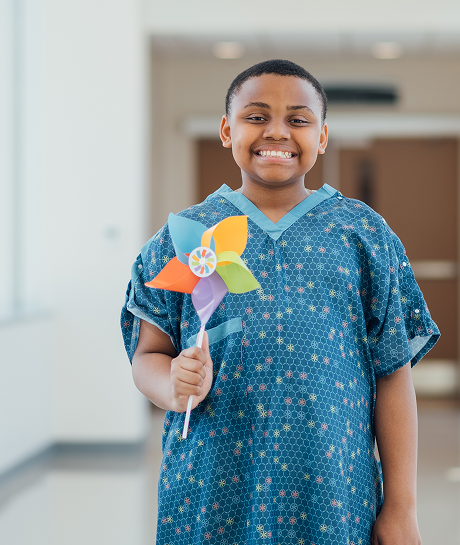cleft lipcleft palate


about condition
Cleft Lip (CL) and Cleft Palate (CP) are congenital malformations from birth. A baby may be born with one or both. This occurs when a baby’s lip, mouth or both do not form properly during pregnancy.
A cleft lip occurs if the lip tissue does not join completely before birth. This can happen on one side (unilateral cleft lip) or both sides (bilateral cleft lip). In milder forms, this condition can range from just a small notch in the upper lip (incomplete) to a greater separation that extends up and into the nose (complete). As the baby grows, this can affect the gum where the teeth erupt.
A cleft palate occurs if the tissue in the roof of the mouth doesn’t close completely which leaves an opening. The back roof part of the palate is called the soft palate; the front roof toward the mouth opening is called the hard palate. A cleft in the palate can affect the soft palate, or both soft and hard. A baby’s CL can often start the surgical process around 3 months of age. The CP repair however takes a bit longer and may not occur until the child reaches between 12 months and 18 months old. A baby can be born with one or the other clefts, or with both.
When a baby is born with only one or both clefts, but no other condition, it is considered isolated apart from other conditions. There are craniofacial conditions however that present with CL, CP or both, as part of the malformations of that condition.
characteristics and symptoms of Cleft Lip and/or Cleft Palate include:
- Opening or separation in the upper lip that may lead up to and into the nose (cleft lip)
- Gum and teeth issues as the child grows
- Opening in roof of mouth that can extend from the back of tongue to front of mouth (cleft palate)
- Small jaw in some instances (Pierre Robin sequence)
- More symptoms depending on what condition has caused the cleft malformation(s)
how do I know if my child will be born with CL and/or CP?
Sometimes when an ultrasound is performed during pregnancy, a doctor or technician may notice non-typical signs which require additional testing. Since a cleft palate cannot always be detected in ultrasound, an abnormal uvula – which usually can be seen – can indicate a cleft palate. An ultrasound may also indicate craniofacial malformations in addition if the ultrasound shows other physical structures that are not forming typically. Presently, there is no known method of genetic testing for clefts in pregnancy unless the clefting is associated with a known genetic family condition.


how do you treat CL and/or CP?
Treatment is focused on the individual, their function and correcting facial structures. This involves surgery for cleft lip and/or palate repair, along with dental and orthodontic care. Depending on any associated craniofacial conditions, there may be airway and other issues of concern; therefore, the child may see different specialties and doctors which include reconstructive plastic surgery, ophthalmology, pulmonology, otolaryngology (ENT), and more.
faqs
In the United States:
- 1 in about every 1700 babies is born with CP without CL
- 1 in about every 2800 babies is born with CL without CP
- 1 in about every 1600 babies is born with CL and CP
Yes. These malformations occur at some point in the pregnancy and while no one knows what causes them, research indicates a possible combination of environmental and genetic factors. If genetics are involved, the cleft could have occurred through family inheritance. A parent with a craniofacial condition known to have these clefts as part of their condition can pass on the condition with the cleft(s) as well. Other times, it is unknown why it happens spontaneously. Environmental factors could mean something that occurs before or during the pregnancy, such as medications, smoking or alcohol. Unfortunately, researchers don’t know the answers when it is an isolated cleft.
Even though cleft repair and possible other surgeries may be in their future, individuals should have a typical life span.
To date, there are no genes known for causing isolated CL and CP. In associated craniofacial conditions, genes or factors will vary depending on the condition.
here when you need us
Whether you’re looking for the right provider, ready to make an appointment, or need care right now—we’re here to help you take the next step with confidence.
